Interior design is more than arranging furniture or choosing the right color palette; it’s about creating a functional, aesthetic, and harmonious space that reflects personal style or brand identity. Whether you’re redesigning your home or planning a professional project, these ten easy steps can guide you toward achieving a stunning interior design.
Step 1: Understand the Space
Before diving into design ideas, analyze the space thoroughly. Measure the dimensions and note existing architectural features like doors, windows, and built-in elements. Assess how natural light interacts with the area and identify potential focal points. This step lays the groundwork for an effective and practical design.
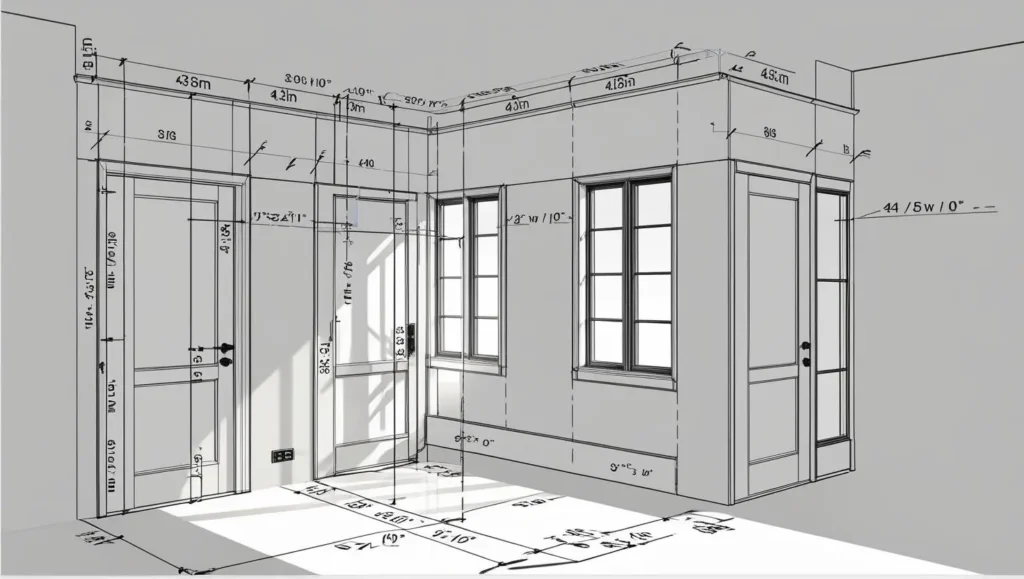
To create an exceptional interior design, start by understanding the physical space you’re working with. This involves:
- Measuring Dimensions: Use tools like a measuring tape or laser measure to record the width, length, and height of the room.
- Analyzing Light: Observe how natural and artificial light enters and interacts with the space.
- Identifying Architectural Features: Note elements like doors, windows, built-ins, or unique structural quirks that might affect design decisions.
Step 2: Define the Purpose
Each space serves a specific function, and your design should align with its intended use. A living room prioritizes comfort and social interaction, while a home office focuses on productivity. Clearly defining the purpose will guide your decisions on furniture, layout, and decor. The purpose of a room dictates its design. Whether it’s a living room, bedroom, or workspace, clearly defining how the space will be used ensures practicality and functionality.
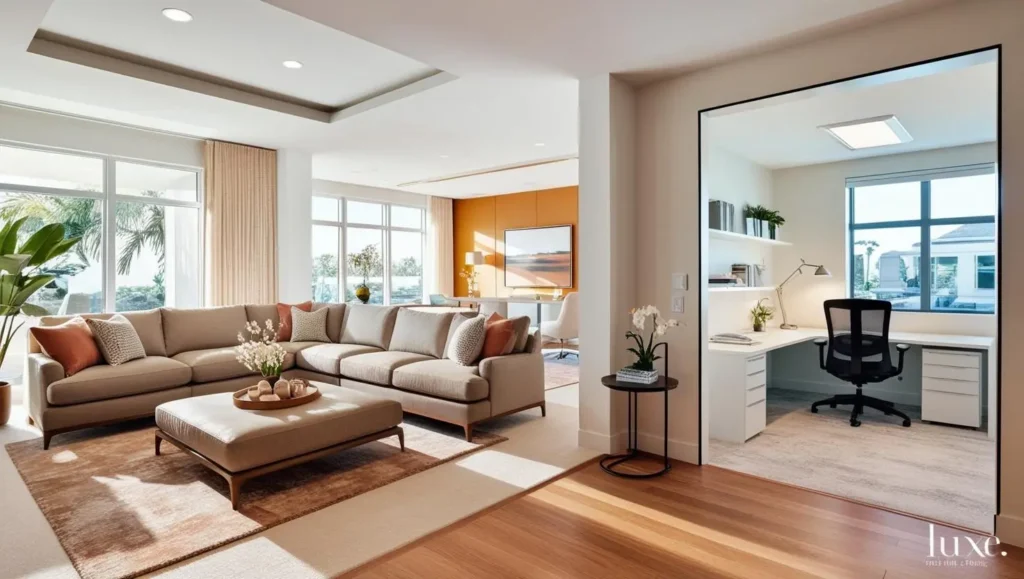
Key Points to Consider:
- Primary Function: Identify whether the space will be used for work, relaxation, or social gatherings.
- User Needs: Consider the needs of everyone who will use the space. For example, a family room might need durable furniture for children, while a home office would prioritize ergonomic seating.
- Multifunctional Spaces: Many modern designs incorporate dual purposes, such as a living room with a work desk or a dining area doubling as a study.
Step 3: Choose a Style
Pick a design style that resonates with you, such as modern, minimalist, rustic, or eclectic. This will create a cohesive theme across space. Explore inspiration from magazines, online resources, or interior design courses with placement to gain a professional understanding of various styles. The design style sets the tone for the entire space. Picking a cohesive theme helps ensure harmony and visual appeal.

Steps to Choose a Style:
- Research Inspirations: Browse design magazines, Pinterest, or online resources to explore options like modern, minimalist, rustic, or industrial styles.
- Assess Personal Preferences: Reflect on your lifestyle, favorite colors, and desired ambiance.
- Create a Mood Board: Combine fabric swatches, color palettes, and images of furniture to visualize your chosen style.
- Consider Trends Carefully: While trends can be inspiring, balance them with timeless elements to avoid frequent redecorations.
Step 4: Plan the Layout
Create a floor plan to visualize the arrangement of furniture and decor items. Tools like CAD software can help create a professional layout. If you’re new to this, consider enrolling in a Diploma in Interior Designing course to learn advanced techniques for planning layouts and visualizing spaces. A well-planned layout optimizes both space and functionality.
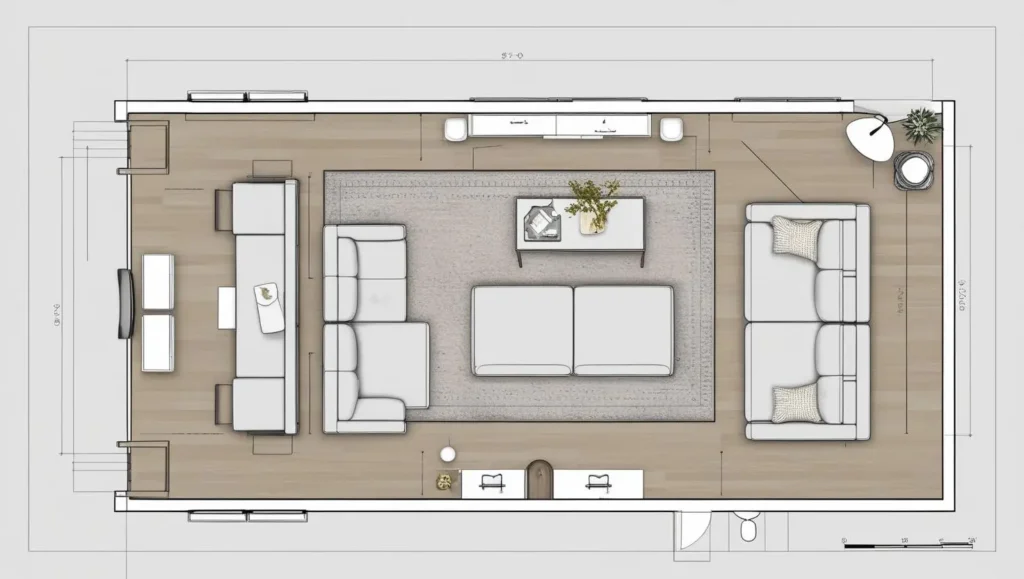
Key Tips for Layout Planning:
- Start with a Floor Plan: Use graph paper or software to map out the room’s dimensions and arrange furniture.
- Focus on Flow: Ensure there’s enough space for movement and access.
- Define Zones: For open-plan spaces, create visual separations like rugs or furniture groupings for different functions.
- Prioritize Focal Points: Arrange furniture to emphasize features like a fireplace or large window.
Step 5: Select the Right Color Palette
Colors set the tone for any interior design. Choose a palette that complements the space’s purpose and mood. For smaller spaces, lighter shades create an illusion of openness, while darker tones add depth and sophistication. Understanding color psychology is a valuable skill taught in many interior design courses in Kerala. Colors influence mood and perception. A harmonious palette can transform a room.
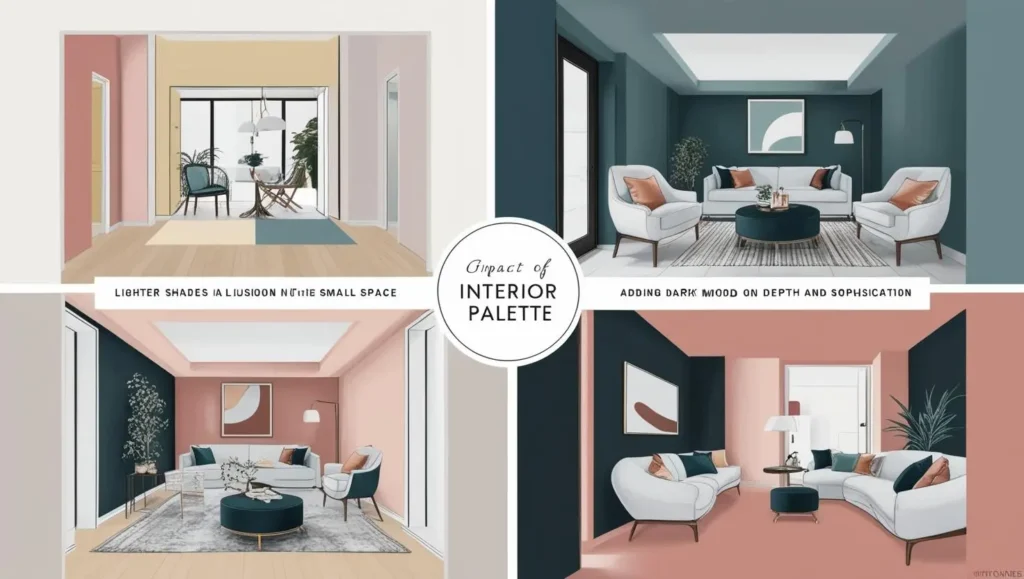
Tips for Choosing Colors:
- Start with a Base Color: Neutral shades like white, beige, or gray work well as a foundation.
- Add Accents: Introduce bolder colors through accessories like cushions or curtains.
- Test Before Committing: Paint small swatches on walls and observe them at different times of day.
- Follow the 60-30-10 Rule: Use 60% of a dominant color, 30% of a secondary color, and 10% as an accent.
Step 6: Invest in Quality Furniture
Furniture plays a crucial role in functionality and aesthetics. Opt for high-quality, durable pieces that fit the chosen design style. Balance statement pieces with simpler items to maintain harmony. If you’re considering a career in this field, a Diploma in Interior Design can teach you how to select and customize furniture for diverse projects. Furniture is the backbone of interior design, balancing aesthetics with functionality.
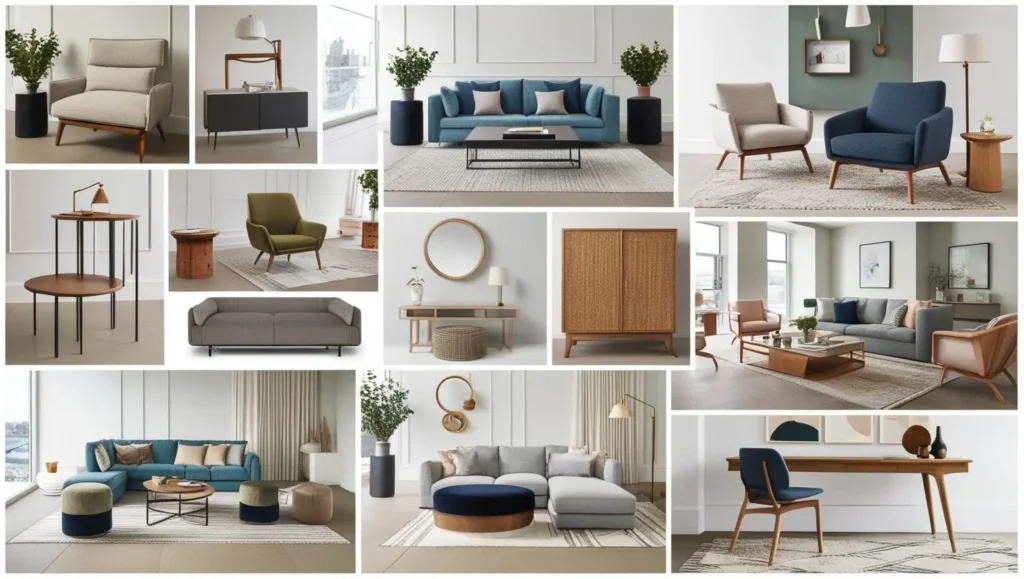
Furniture Selection Tips:
- Measure First: Always ensure furniture fits the room without overcrowding.
- Blend Style with Comfort: Choose pieces that align with your design style but don’t compromise comfort.
- Mix and Match: Combine statement pieces with simpler designs for balance.
- Choose Sustainable Options: Look for durable and eco-friendly materials.
Step 7: Layer Lighting
Lighting enhances the ambiance and usability of a space. Incorporate a mix of ambient, task, and accent lighting to achieve depth and functionality. Consider pendant lights, recessed lighting, or floor lamps to highlight specific areas. Learning lighting techniques is often part of a diploma in interior designing, which focuses on creating mood-enhancing designs.
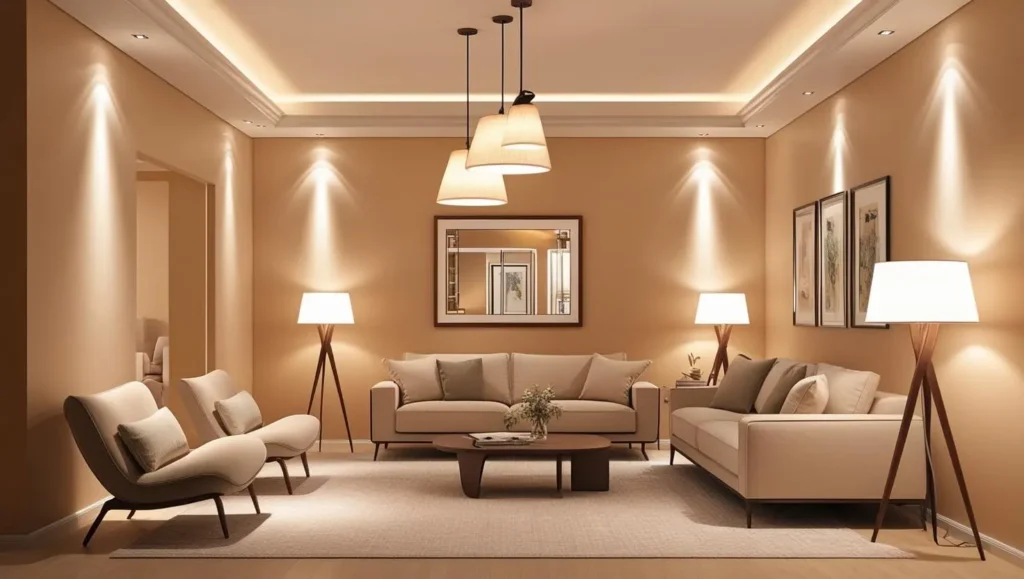
Types of Lighting:
- Ambient Lighting: General lighting, like ceiling fixtures, illuminates the entire room.
- Task Lighting: Specific lights for activities like reading or cooking, such as desk lamps or under-cabinet lighting.
- Accent Lighting: Highlights decorative elements, like artwork or architectural features, using spotlights or wall sconces.
Step 8: Add Textures and Patterns
Introduce a mix of textures and patterns through rugs, cushions, curtains, and wallpapers. This adds visual interest and prevents the space from feeling monotonous. Textures can also evoke a sense of comfort and luxury, essential for creating inviting interiors. Texture and pattern add depth and character to a design.

Ideas for Texture and Pattern:
- Soft Textures: Use cushions, throwers, or rugs for a cozy feel.
- Hard Textures: Include materials like glass, metal, or stone for contrast.
- Patterns: Experiment with geometric designs, florals, or abstract prints on wallpapers or upholstery.
Step 9: Accessorize Thoughtfully
Decorative elements like artwork, mirrors, vases, and plants add character to your design. Choose items that reflect your personality or complement the space’s theme. Avoid clutter by placing accessories strategically to maintain a clean and organized look.
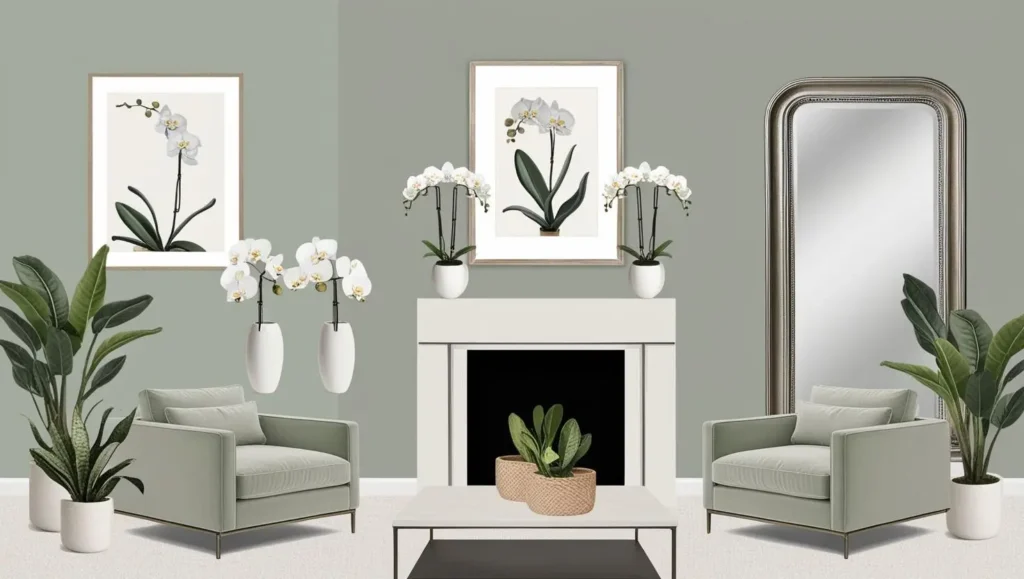
Tips for Accessorizing:
- Choose Meaningful Items: Display art or decor with sentimental value.
- Avoid Clutter: Use fewer, impactful pieces rather than overloading the space.
- Experiment with Heights: Vary the height of decor items for visual interest.
Step 10: Evaluate and Adjust
After implementing your design, take a step back to evaluate. Adjust elements as needed to achieve the perfect balance. Sometimes, less is more, and removing an item can enhance the overall aesthetic. Professional designers emphasize the importance of this step in interior design institutes in Kerala. A final review helps fine-tune the design.
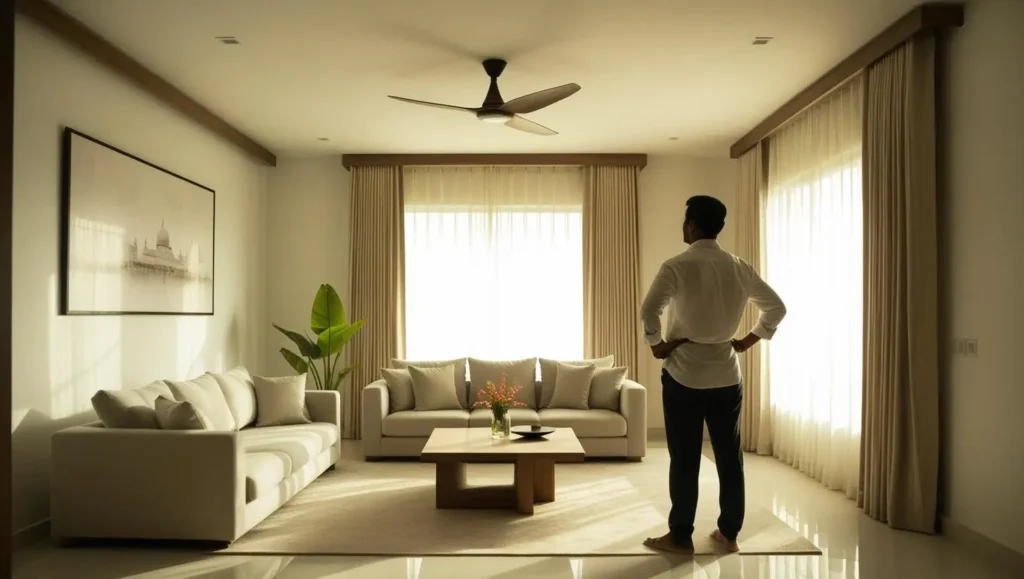
Evaluation Tips:
- Test Functionality: Ensure furniture and decor don’t impede usability.
- Seek Feedback: Ask friends or family for fresh perspectives.
- Make Adjustments: Swap or remove items until you achieve the desired balance.
Why Choose Kikstaart Edu for Interior Design?
If you’re passionate about transforming spaces and want to turn your creativity into a career, consider enrolling in Kikstaart Edu’s Diploma in Interior Design course. Because of
- Comprehensive Curriculum: Learn the principles of design, color theory, furniture selection, and lighting techniques.
- Placement Opportunities: Our interior design courses with placement ensure you step confidently into the industry.
- Flexible Options: Choose from short-term courses or full-fledged programs, including our diploma in interior design and advanced certifications.
- Expert Guidance: Study under experienced professionals who are dedicated to your success.
- Prime Location: Based in Kerala, Kikstaart Edu, The Kerala state Rutronix Authorised Training Institute, located in kazhakoottam, Trivandrum, is one of the best interior design institutes in Kerala, offering world-class education tailored to industry needs.
Our comprehensive courses provide both theoretical knowledge and hands-on experience. We’re committed to shaping the next generation of designers. Explore our interior design course in Kerala and transform your career today!
For more details, visit Kikstaart Edu and start your journey in the world of design.

